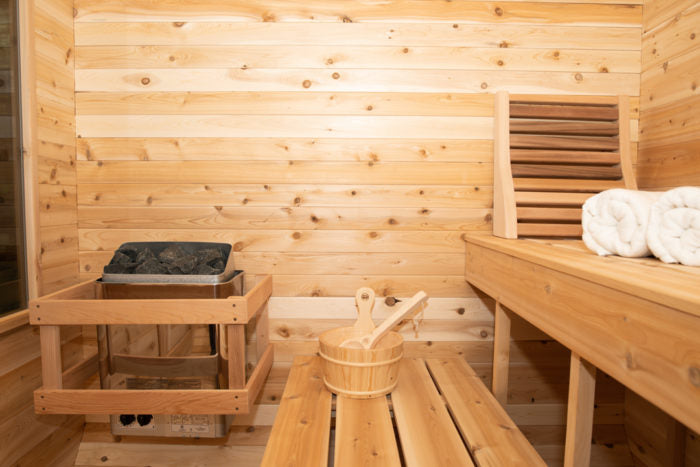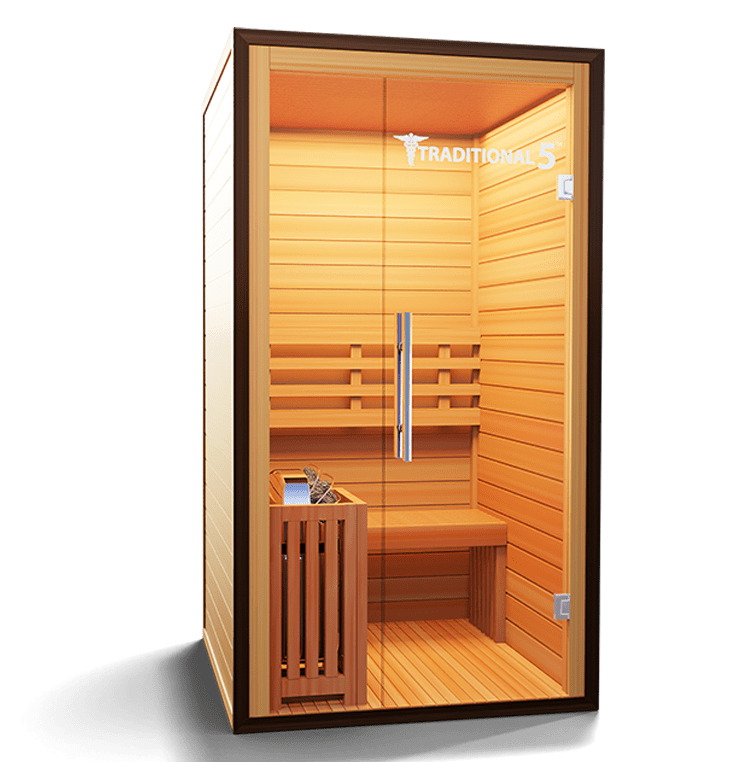Not known Incorrect Statements About Traditional Sauna
Not known Incorrect Statements About Traditional Sauna
Blog Article
The 45-Second Trick For Traditional Sauna
Table of ContentsHow Traditional Sauna can Save You Time, Stress, and Money.The smart Trick of Traditional Sauna That Nobody is Talking AboutThe Ultimate Guide To Traditional SaunaAn Unbiased View of Traditional SaunaThe Traditional Sauna Ideas
Power financial savings is one point to take into consideration for individuals that intend on using their sauna often. For a standard sauna, bathers usually need to wait on 30-40 mins for the space to pre-heat before entering. Infrared saunas, on the other hand, generally reach their perfect temperature in about 15 minutes.That indicates that in an infrared sauna, bathers can begin appreciating their sauna promptly. One distinction in between the two kinds of sauna that is commonly overlooked is the social experience.

Unknown Facts About Traditional Sauna

Attempt a sauna today and find some of the remarkable advantages on your own!.

Variables such as warm tolerance, wanted degree of cleansing, and total wellness should be considered when making a decision which sort of sauna to make use of. Infrared saunas are a kind of sauna that utilize infrared light to heat up the body directly, as opposed to heating the air around the body like conventional saunas.
All About Traditional Sauna
The temperature level in an infrared sauna is usually less than in a traditional sauna, with temperature levels varying from 120F to 150F. Infrared saunas use a range of benefits that make them an eye-catching option for those seeking to boost their health and wellness and well-being. Some of the advantages of infrared saunas include: Infrared saunas utilize reduced temperatures than standard saunas, which can make them a lot more comfortable for those who find high temperatures difficult to endure.
Infrared saunas have actually been shown to help the body get rid of contaminants via sweating. Sweating can likewise help to improve skin health and wellness by removing pollutants and dead skin cells.
The heat created by infrared saunas can help to raise blood circulation and boost circulation. Infrared saunas have actually been shown to aid minimize anxiety and promote leisure.
With their lower temperatures, deep penetration, and array of health benefits, infrared saunas are a wonderful method to relax, relax, and improve your general health. Typical dry saunas have actually been around for centuries and are still prominent today. They are generally heated with timber, gas, or electrical energy and have low humidity degrees.
The Ultimate Guide To Traditional Sauna
There are several benefits to making use of a conventional dry sauna. Below are a few: Leisure: The heat and reduced moisture in standard dry saunas can help relax the muscle mass and decrease tension degrees. Cleansing: Sweating in a sauna can help get rid of toxic substances from the body, which can boost overall wellness.
When it comes to saunas, there are 2 main types of home heating methods: standard and infrared. Typical saunas use warmed air to heat the body, while infrared saunas utilize infrared radiation to penetrate the skin and heat the body from within. Among the main distinctions in between the 2 techniques is the kind of warmth they produce.
Due you can try these out to the fact that infrared radiation passes through the skin extra deeply, it can create a similar sweat feedback at reduced temperatures. An additional difference is the method the heat is distributed. Traditional saunas warm the air, which after that heats the body via convection. Infrared saunas, on the various other hand, warm the body straight via radiation.
In terms of energy performance, infrared saunas are typically much more reliable than typical saunas since they call for less power to operate. They likewise warm up more promptly, so they can be made use of for much shorter sessions. Traditional Sauna. When it involves the results on the body, both sorts of saunas have actually been shown to have benefits
The Buzz on Traditional Sauna
Infrared saunas have actually been revealed to have similar advantages, along with possibly aiding with detoxification, skin wellness, and immune function. Overall, the selection between a standard or infrared sauna comes down to individual preference and individual needs. Typical saunas may be much better for those who favor higher temperatures and an extra intense sweat reaction, while infrared saunas may be better for those who want a more gentle and effective warm treatment.
Both sorts of saunas offer distinct advantages and downsides that ought to be considered prior to choosing. The selection between an infrared sauna and a typical dry sauna largely depends upon individual preference and the desired benefits. Those who prefer an even more comfortable, lower temperature read review level setting may favor an infrared sauna, while those that are seeking intense warm and a conventional sauna experience might favor a standard dry sauna.
Here are some safety ideas to bear in mind when using infrared and traditional dry saunas:: Saunas can trigger extreme sweating, bring you could try these out about dehydration. It is essential to drink lots of water previously, during, and after sauna sessions to stay hydrated.: It is recommended to restrict sauna sessions to 20-30 minutes to avoid overheating and dehydration.
Report this page